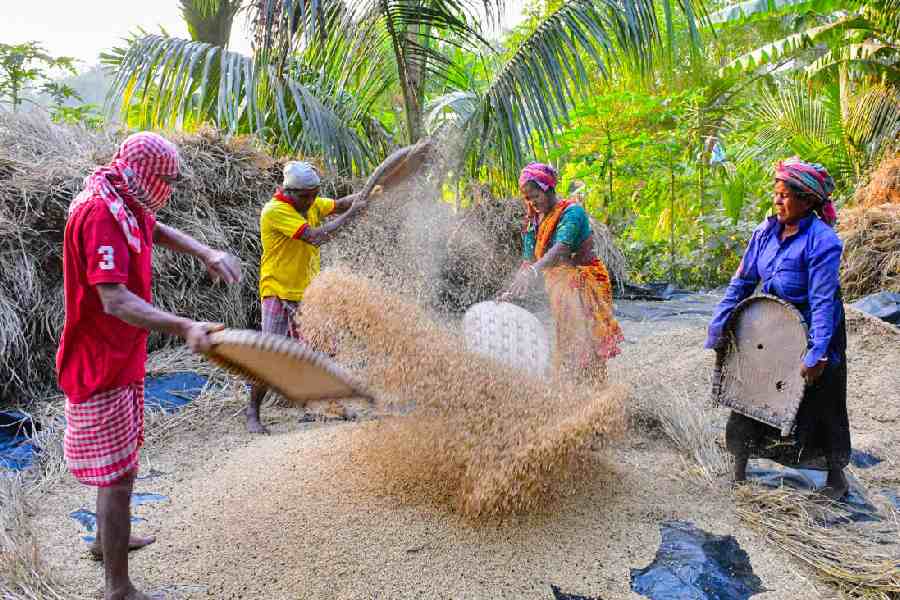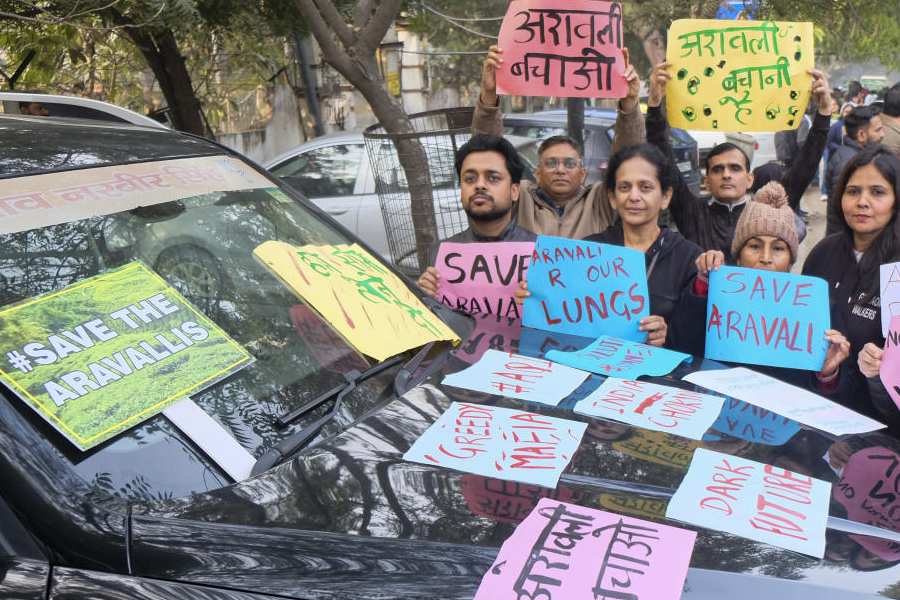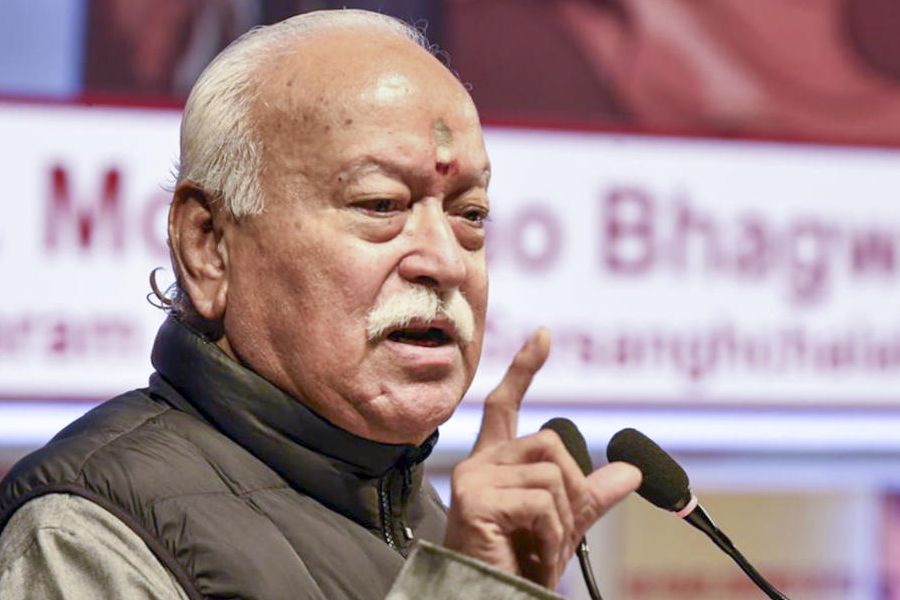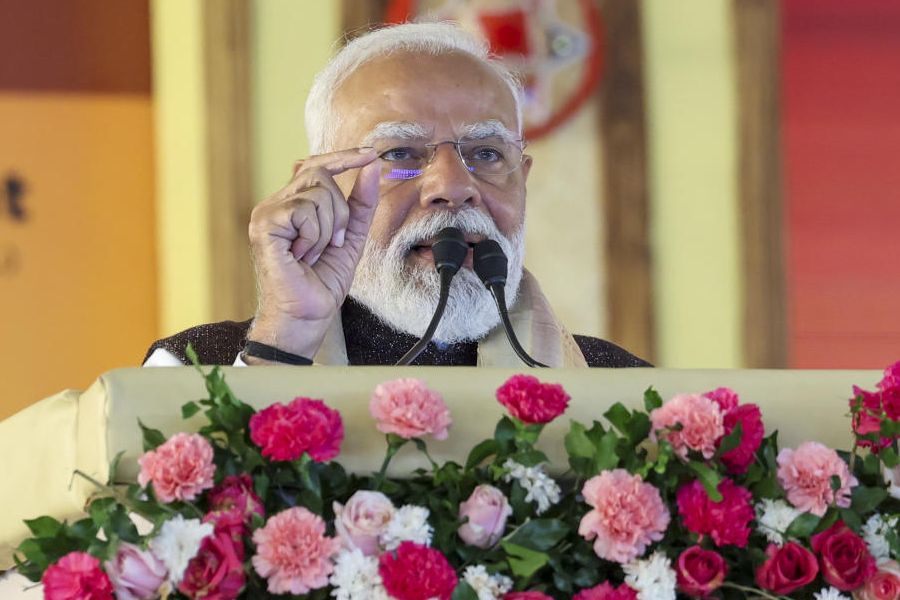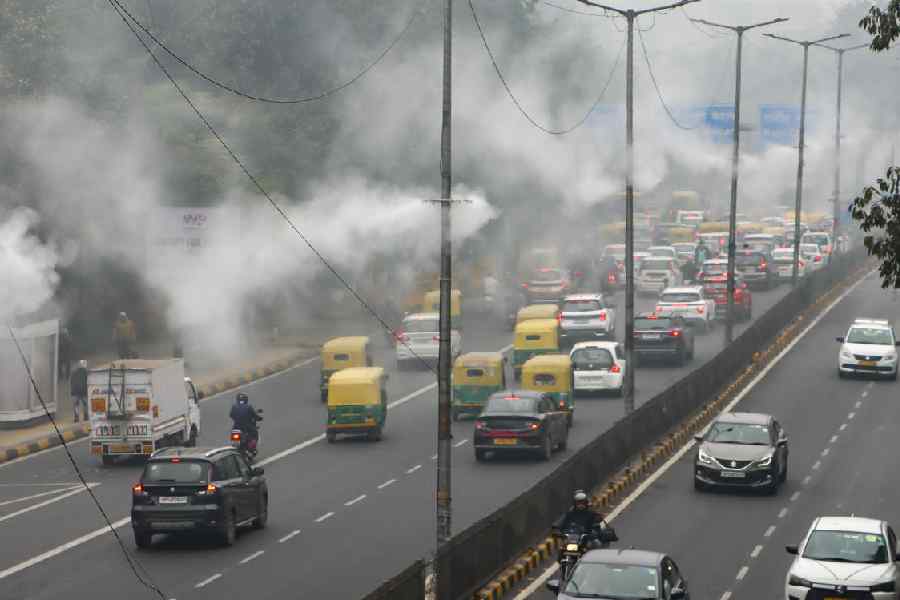The Bengal government has managed to procure 46 lakh tons of paddy directly from farmers but the gap between the actual purchase and the annual target of 68 lakh tons has become a major concern for the state ahead of next year's Assembly elections.
"Harvesting of the kharif (monsoon) crop begins at the end of November. Reports from rural areas suggest only 67 per cent of the procurement target has been met by mid-February. This is not satisfactory.... If we cannot meet 80 per cent of the target by February end, it would be tough to achieve the annual paddy procurement goal,” said an official.
Achieving the target is important for the Bengal government in the 2024-25 procurement cycle, which started in October and will end in September this year, for two main reasons.
First, the state government is keen on reaching out to 25 lakh farmers with the benefit of minimum support price (MSP) of paddy. So far, about 22 lakh farmers have registered with the food and supplies department to sell their paddy.
"If the state fails to achieve the target, it will not be possible to give the benefit of MSP to a maximum number of farmers ahead of next year's Assembly polls. The ruling party cannot afford rural discontent," said a source.
Second, the non-fulfilment of the procurement target will force the state to depend on the rice supplied from the central pool to run the cheap grain scheme in Bengal.
"Last year, the state had to depend on the supply from the central pool to run the cheap grain scheme. As the central supply hinges on availability, the government cannot afford to take the risk in the year before the election," said the source.
According to him, though the procurement window will remain open, the focus has to be on the kharif crop, which is about 110 lakh tons out of annual paddy production of 160 lakh tons.
"If the state cannot utilise the kharif season for procurement, it would be tough to achieve the target as only 14 lakh hectares are cultivated in the boro season which produces about 50 lakh tons,” said the official.
In Bengal, it has been seen that farmers do not show the inclination to sell their boro produce — for which they have to spend extra for irrigation and fertilisers — to the government.
“As the production cost goes up, the farmers prefer selling the produce on the doorstep. Selling their produce to the government involves hassles like long waiting time, cost of transportation to the procurement centres and another phase of waiting for payments," an official explained.
This year, the Centre announced ₹2,300 as MSP for a quintal of paddy across the country. The Bengal government announced a bonus of ₹20 a quintal taking the MSP to ₹2,320 in the state.
In contrast, the rate of paddy in the open market hovers between ₹2,100 and ₹2,150 a quintal after the harvesting of the kharif crop. The price reaches about ₹2,250 to ₹2,300 a quintal in the open market after the arrival of the boro crop.
“There is an incentive to sell the kharif crop to the government because of the difference between the MSP and the open market price, which doesn't exist in the boro season," said the official.
Against this backdrop, the food and supplies department is laying stress on giving momentum to reaching out to the farmers in districts, where the procurement did not meet the target.
“Districts like Hooghly, Howrah and South 24-Parganas are lagging in the paddy procurement. These districts have been asked to expedite the procurement as the department aims to purchase at least 55 lakh tons of paddy by the end of February,” said a senior official.

